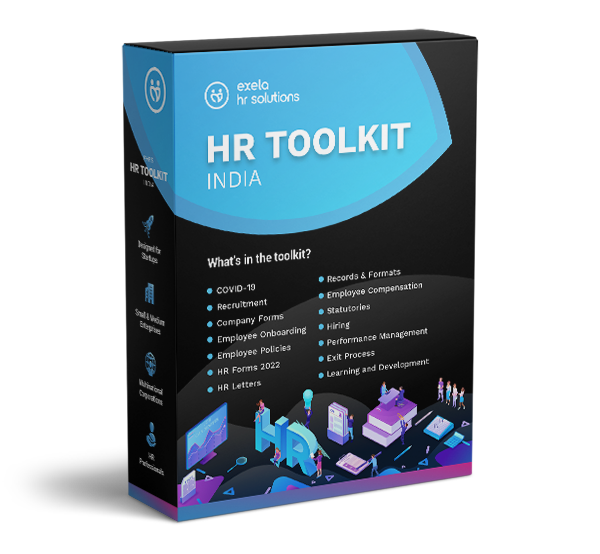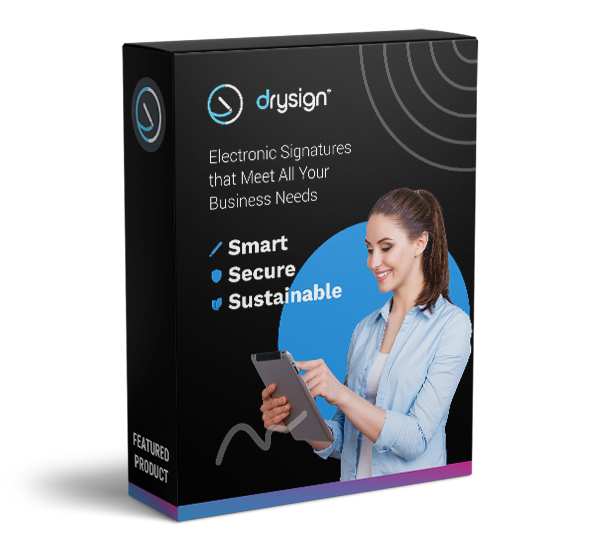
The year 2024 marks a pivotal moment in the ever-evolving landscape of the job market. As organizations continue to navigate the complexities of a dynamic and competitive business environment, the quest for top talent has never been more critical. In this era of rapid technological advancements and shifting workforce dynamics, the ability to attract, recruit, and retain exceptional individuals is a key determinant of an organization's success.
The global workforce is experiencing transformative changes influenced by technological breakthroughs, economic shifts, and societal trends. Organizations are not only competing for skilled professionals in traditional sectors but are also contending with the demand for expertise in emerging fields such as artificial intelligence, blockchain, and sustainable practices. Understanding this multifaceted landscape is crucial for organizations seeking to position themselves as employers of choice.
In the spirit of embracing the challenges and opportunities that 2024 presents, this blog aims to provide organizations with a comprehensive guide to optimizing their recruiting strategies. We will delve into 8 proven strategies that reflect the latest trends, technologies, and best practices in talent acquisition. Whether you are a multinational corporation, a small business, or a startup, these strategies are designed to be adaptable and scalable, offering insights that cater to the diverse needs of organizations across industries. Dive into the below session to learn more.
-
Building a Strong Employer Brand
-
Why It Matters:
Attraction of Top Talent: A strong employer brand attracts top talent by showcasing a positive workplace culture, values, and opportunities for growth.
Competitive Edge: It provides a competitive edge in the talent market, making the organization more appealing to prospective employees.
Employee Retention: A positive employer brand enhances employee satisfaction and retention by aligning organizational values with employee expectations.
-
Strategies for Success:
Authentic Storytelling: Communicate authentic stories that reflect the company's values, mission, and the experiences of its employees.
Online Presence: Maintain a compelling online presence through a user-friendly career website and active engagement on social media platforms.
Employee Advocacy: Encourage and leverage employee advocacy to amplify positive narratives about the workplace.
Recognition and Awards: Showcase industry recognitions, awards, and positive reviews to build credibility and trust among potential candidates.
-
Measuring Impact:
Candidate Surveys: Utilize candidate surveys to gather feedback on the employer’s brand perception during the recruitment process.
Retention Rates: Monitor employee retention rates to assess the impact of positive employer branding on workforce stability.
Social Media Analytics: Analyze social media metrics to measure engagement, reach, and sentiment regarding the employer brand.
-
-
Leveraging Technology for Recruitment
-
Automation for Efficiency:
Applicant Tracking Systems (ATS): Utilize ATS platforms to streamline the recruitment process, from resume screening to interview scheduling.
Automated Communication: Implement automated communication tools for timely updates and feedback to candidates, enhancing the candidate experience.
-
AI and Machine Learning:
Predictive Analysis: Employ AI and machine learning for predictive analysis to forecast recruitment trends and identify potential talent gaps.
Candidate Matching: Leverage AI for candidate matching, ensuring a more efficient and accurate selection process.
-
Virtual Assessments:
Video Interviews: Conduct virtual interviews using video conferencing platforms to widen the reach of candidate assessments.
Online Skills Tests: Use online skills tests and simulations to evaluate candidates' technical competencies and problem-solving abilities.
-
Data Analytics for Optimization:
Metrics Tracking: Monitor key recruitment metrics, such as time-to-fill and cost-per-hire, to optimize and refine recruitment strategies.
Continuous Improvement: Use data analytics to identify trends, assess the effectiveness of sourcing channels, and make data-driven decisions for continuous improvement.
-
Mobile Recruitment:
Mobile-Friendly Platforms: Ensure that recruitment processes are mobile-friendly, allowing candidates to apply and engage easily via smartphones.
Mobile Recruiting Apps: Implement mobile recruiting apps for a seamless and accessible application process.
-
-
Creating Targeted Job Descriptions
-
Clarity and Relevance:
Clear Language: Use clear and concise language to communicate job responsibilities and expectations.
Relevance to Role: Tailor job descriptions to highlight the specific skills and qualifications essential for the role.
-
Inclusive Language:
Avoid Bias: Use inclusive language to appeal to a diverse range of candidates and avoid unintentional bias.
Equal Opportunity: Emphasize the organization's commitment to equal opportunity and diversity.
-
Compelling Value Proposition:
Highlight Benefits: Clearly articulate the benefits of working for the organization, emphasizing unique selling points.
Career Growth: Showcase opportunities for career growth and development within the company.
-
SEO Optimization:
Keyword Integration: Optimize job descriptions for search engines by incorporating relevant keywords.
Accessibility: Ensure that job postings are easily accessible on various platforms and devices.
-
Engagement and Call-to-Action:
Inviting Tone: Craft an attractive and engaging tone to make job descriptions more appealing.
Clear Call-to-Action: Include a clear call-to-action, guiding candidates on how to apply and encouraging proactive responses.
-
-
Implementing Employee Referral Programs
-
Program Structure:
Clear Guidelines: Establish clear guidelines for employees to understand the referral process, eligibility criteria, and rewards.
Reward Structure: Define a competitive reward structure that incentivizes quality referrals and aligns with organizational goals.
-
Communication and Promotion:
Internal Campaigns: Promote the referral program through internal campaigns to create employee awareness and enthusiasm.
Regular Updates: Provide regular updates on program performance, successful hires, and rewards to maintain employee engagement.
-
Recognition and Appreciation:
Public Acknowledgment: Publicly acknowledge and recognize employees for successful referrals, fostering a culture of appreciation.
Tiered Rewards: Consider tiered rewards for multiple successful referrals, encouraging ongoing participation.
-
Simplicity and Accessibility:
User-Friendly Platform: Implement a user-friendly, accessible platform for employees to submit referrals and track the status of their submissions.
Simplified Processes: Streamline administrative processes to make participation easy for employees.
-
Feedback and Evaluation:
Feedback Mechanism: Establish a feedback mechanism for employees to share their experiences with the referral process.
Regular Evaluation: Regularly evaluate the effectiveness of the referral program, making adjustments based on feedback and performance metrics.
-
Also read our latest blog: Fixing Hiring Problems First Fixes Restructuring Problems?
- Embracing Social Media Recruiting
-
Platform Selection:
Targeted Platforms: Identify and utilize social media platforms most relevant to the target candidate demographic.
Diverse Presence: Maintain a diverse presence across platforms like LinkedIn, Twitter, and Instagram for a comprehensive reach.
-
Engaging Content:
Visual Appeal: Use visually appealing content, including images, videos, and infographics, to capture attention.
Compelling Messaging: Craft concise and compelling messaging that highlights the organization's culture, values, and job opportunities.
-
Interactive Campaigns:
Q&A Sessions: Conduct live Q&A sessions or webinars to interact with potential candidates and address queries.
Challenges and Contests: Implement challenges or contests to encourage user participation and create a buzz around job openings.
-
Employee Involvement:
Employee Takeovers: Allow employees to take over social media accounts periodically to share their experiences and insights.
Employee Advocacy: Encourage employees to share job postings and company updates on their personal social media profiles.
-
Data Analytics:
Performance Metrics: Utilize analytics tools to track the performance of social media recruitment efforts.
Adaptation Strategies: Analyze data regularly to refine strategies, focusing on the most effective platforms and content types.
-
-
Offering Competitive Compensation Packages
-
Market Research:
Salary Benchmarking: Conduct regular salary benchmarking to ensure compensation packages align with industry standards.
Benefits Analysis: Evaluate and enhance non-monetary benefits, such as healthcare and retirement plans, to remain competitive.
-
Transparency and Communication:
Transparent Policies: Maintain transparent communication about compensation policies, ensuring clarity for current and prospective employees.
Total Rewards Statements: Provide total rewards statements outlining both monetary and non-monetary benefits to showcase the overall value of compensation packages.
-
Performance-Based Incentives:
Variable Pay: Incorporate performance-based incentives, such as bonuses or profit-sharing, to reward employees for outstanding contributions.
Recognition Programs: Implement recognition programs that tie performance to additional rewards, fostering a culture of excellence.
-
Flexibility and Customization:
Flexible Benefits: Offer flexible benefits packages that allow employees to customize their compensation based on individual needs.
Remote Work Options: Consider remote work options or flexible schedules as part of the overall compensation strategy to attract diverse talent.
-
Regular Reviews and Adjustments:
Annual Reviews: Conduct annual compensation reviews to stay abreast of market changes and adjust packages accordingly.
Feedback Mechanism: Establish a feedback mechanism for employees to express concerns or suggestions regarding compensation, ensuring continuous improvement.
-
-
Streamlining the Application Process
-
User-Friendly Interfaces:
Simplified Forms: Design straightforward and concise application forms, reducing the time and effort required from candidates.
Mobile Optimization: Ensure mobile optimization for seamless application submissions, accommodating candidates accessing the process from various devices.
-
Efficient ATS Integration:
Automated Resume Parsing: Implement automated resume parsing within Applicant Tracking Systems (ATS) to streamline the initial screening process.
Status Notifications: Utilize ATS features for automated status notifications to keep candidates informed about their application progress.
-
Personalized Communication:
Customized Auto-Responses: Develop personalized auto-response emails, acknowledging application submissions and setting clear expectations for the recruitment timeline.
Interactive Chatbots: Integrate interactive chatbots to provide real-time assistance and answer candidate queries during the application process.
-
Reduced Redundancy:
Single Sign-On: Implement single sign-on features to reduce redundancy, allowing candidates to use existing credentials for a seamless application experience.
Pre-filled Information: Enable pre-filled information options for returning candidates, minimizing repetitive data entry.
-
Feedback Mechanism:
Candidate Surveys: Integrate post-application surveys to gather feedback on the application experience, identifying areas for improvement.
Continuous Optimization: Use feedback data to continuously optimize the application process, ensuring ongoing efficiency and candidate satisfaction.
-
-
Implementing Diversity and Inclusion Initiatives
-
Inclusive Recruitment Practices:
Unbiased Job Descriptions: Craft job descriptions using inclusive language to attract a diverse pool of candidates.
Diverse Interview Panels: Ensure diverse representation on interview panels to minimize biases and promote equal opportunities.
-
Diversity Training:
Mandatory Training: Implement mandatory diversity and inclusion training for all employees to foster awareness and understanding.
Leadership Training: Provide leadership training focused on fostering inclusive leadership practices throughout the organization.
-
Affinity Groups and Networks:
Employee Resource Groups: Establish employee resource groups or affinity networks to provide support, networking, and mentorship opportunities.
Leadership Support: Ensure leadership actively supports and participates in these groups to demonstrate commitment to diversity and inclusion.
-
Diverse Talent Pipelines:
Partnerships with Diverse Organizations: Forge partnerships with organizations that specialize in diverse talent to broaden the recruitment pipeline.
Internship Programs: Create internship programs targeting underrepresented groups to nurture diverse talent from early career stages.
-
Conclusion
As we navigate the challenges of the new year, Exela HR Solutions stands as a valuable partner in streamlining your recruitment efforts. Leveraging cutting-edge technology, our experts ensure efficiency and flexibility in managing candidate data and recruitment workflows.
Our comprehensive suite of services extends beyond technology, encompassing strategic insights, industry expertise, and a commitment to driving diversity and inclusion in your talent acquisition initiatives.
In 2024, let Exela HR Solutions be your partner in shaping a recruitment strategy that not only meets the demands of the present but also positions your organization for sustained success in the future. Together, let's navigate the dynamic talent landscape and secure the top talent needed to drive your organization's growth.
Get Exela HR Solutions now!
DISCLAIMER: The information on this site is for general information purposes only and is not intended to serve as legal advice. Laws governing the subject matter may change quickly, and Exela cannot guarantee that all the information on this site is current or correct. Should you have specific legal questions about any of the information on this site, you should consult with a licensed attorney in your area.





